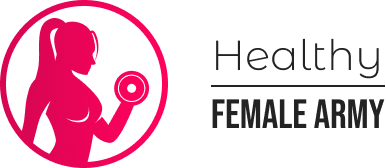Consumption of “magic” mushrooms and other hallucinogens by young adults nearly doubled over the past three years, a new study has found, illustrating the accelerating pace of America’s “psychedelic revolution” and growing societal acceptance of mind-altering drugs.
Researchers found that 6.6 percent of adults from ages 19 to 30 used hallucinogens other than LSD, a category dominated by psilocybin, in 2021, up from 3.4 percent in 2018. LSD use by young adults rose from 3.7 percent to 4.2 percent in the same period, according to an article published this month in the journal Addiction.
Roughly 8 percent of young adults used some kind of hallucinogen in 2021, the highest share recorded since at least the 1980s.
Public health officials face a growing societal disconnect over the risks and rewards of recreational drugs. Both marijuana and hallucinogens registered historic highs in young-adult use in 2021, according to federal data.
Broad legalization of recreational cannabis has swept away much of the cultural stigma attached to its use. Meanwhile, science is exploring potential therapeutic benefits from psilocybin and other psychedelics. Middle-class moms are microdosing magic mushrooms, embracing the potential of psychedelics to tamp down depression or addiction or post-traumatic stress.
Yet, therapeutic use of psychedelics remains rare. Most young adults who take hallucinogens are engaging in youthful experimentation, not unlike their baby-boomer forebears in the Woodstock era. And those experiments are not without risk.
“The main danger I’d be worried about is a bad trip,” said Nora Volkow, director of the National Institute on Drug Abuse. “Because a bad trip can result in suicide.”
The new study from researchers at the University of Michigan and Columbia University tapped survey data from Monitoring the Future, an ongoing project to track behaviors and attitudes from adolescence into adulthood.
“A doubling of prevalence in just three years is a dramatic increase and raises possible public health concerns,” said Megan Patrick, a study co-author and co-principal investigator of Monitoring the Future at the University of Michigan, of the findings.
Patrick cautioned that the study raises more questions than it answers. Such is the spirit of Monitoring the Future, which posits statistical trends to inspire further study.
“It’s really difficult to explain these trends,” she said. “We have some guesses, but we don’t really know yet.”
Men experimented with hallucinogens at a higher rate than women. That finding tracks with other data suggesting that young men lean in to risky behavior more often than young women.
If the overall upward trend continues, young adults may soon be using psychedelic drugs at the same rate as baby boomers in the hippie era.
A Gallup poll in 1971, near the high-water mark for psychedelics, found that 18 percent of college students had used LSD or other hallucinogens.
In 1976, an early Monitoring the Future survey found that 15 percent of 12th graders had used hallucinogens. The quotient fell to 9 percent in 1988, rose to 15 percent in 1997, then declined steadily through the 2000s. In 2022, 7 percent of high school seniors said they had tried a hallucinogen.
“With the younger ages, we’ve done a good job in delaying the start of use,” by educating students about how drugs can harm the developing brain, said Sion Harris, an associate professor of pediatrics at Harvard Medical School. “That has been tremendously successful.”
The share of young adults who experiment with hallucinogens, by contrast, has been creeping up: from 3 percent in 2011 to 5 percent in 2016 and 8 percent in 2021, a record high, according to federal data.
Young adults are not taking a lot more LSD, perhaps the best-known hallucinogen. Instead, they are embracing psilocybin, whose therapeutic value has gained currency. Numerous scientific studies have suggested a use for psilocybin and other psychedelic drugs in treating depression, post-traumatic stress, addiction and other mental-health maladies.
Berkeley, Yale and Johns Hopkins universities all now operate centers for the scholarly study of psychedelics. Advocates hope that research will ultimately clear the way for the federal decriminalization of psilocybin, MDMA (also known as ecstasy or molly), ketamine and other mind-altering drugs for both therapeutic and recreational use.
Those developments have moved psychedelics from the fringe to the mainstream in science and popular culture. Old fears about adverse reactions and “bad trips” have receded.
Young adults who read about the psychedelic revolution might conclude that, “as long as somebody’s using it medicinally, it’s OK to use it generally,” Harris said. “Never mind that there are plenty of instances, that don’t get a lot of attention, of bad reactions.”
One 2016 paper catalogued a sobering list of “adverse effects” from psychedelics, including “fear or panic, paranoia, sadness or depressed mood, anger, cognitive effects (e.g. confusion, loss of ego, loss of sanity, delusions, dissociation, depersonalization), perceptual effects (e.g. illusions), and physiological symptoms (e.g. increased heart rate, nausea/emesis, sympathetic system response).” Sometimes, the symptoms don’t go away when the drug wears off.
Yet, the past decade has brought a trove of research suggesting psychedelic therapy can help people with a range of “intractable psychological conditions” that have resisted traditional therapy, said Neşe Devenot, a postdoctoral associate at the Institute for Research in Sensing at the University of Cincinnati.
“Back in 2010, when I would tell people I was working in psychedelic studies, I would get a lot of confused looks,” Devenot said. “A lot of people would tell me, ‘Wasn’t that over in the ‘60s?’ I have seen firsthand that in the past decade, the past five years, there’s been this big shift in the average person’s interest in psychedelics.”
Devenot said the new study paints an incomplete picture of how young America is responding to the promise of psychedelics in mental healthcare.
For example, the study lumped together psilocybin and PCP, or angel dust, a drug with no known therapeutic use.
“PCP is never included in this conversation about therapeutic potential,” Devenot said.
Devenot also questioned the theory that “any kind of nonmedical use” of psilocybin, a hallucinogen with centuries of documented use, is “inherently risky.”
Colorado and Oregon have decriminalized psilocybin, and some cities have stopped policing its use, mirroring the broader legalization push for cannabis.
Other researchers stress, however, that psilocybin and cannabis can trigger harrowing psychological episodes, heart palpitations and ER visits.
“This isn’t all just peace, love and light,” Harris said. “There’s the potential to have bad reactions.”














